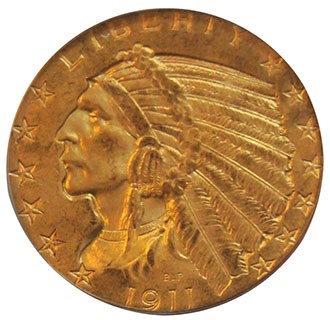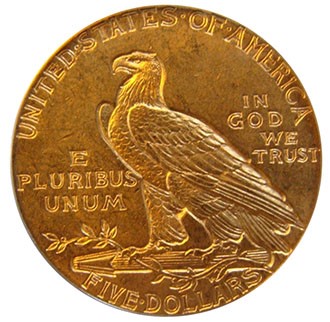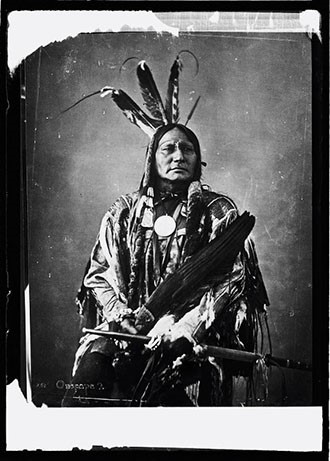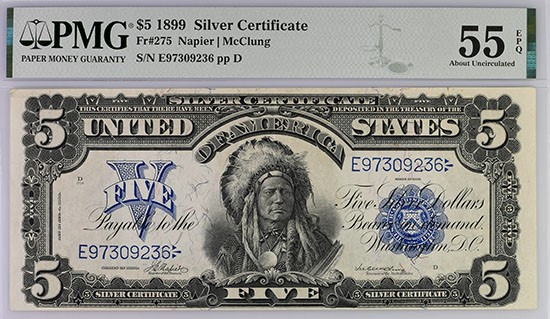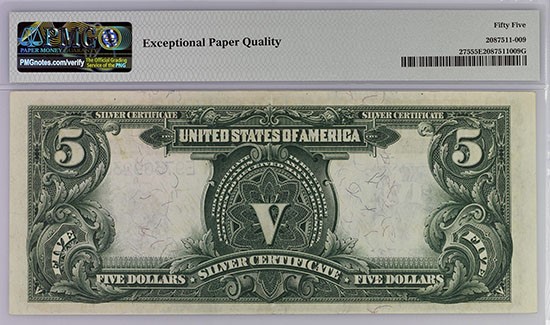Jim Bisognani: The $5 Silver Certificate
Posted on 7/28/2022
 |
It’s late July, and I don’t need the calendar to remind me that it is still summer as it was a blazingly hot 96 degrees yesterday here in New Hampshire. With the dew point reporting in at 73, it was indeed tropical! It is a tad unusual in my neck of the woods for temperatures in the 90s — for four or more consecutive days. Such has been the summer of 2022 in most areas of our world. As this article posts, the calendar confirms that I will have been a coindexter for 56 years! Wow!
In late July 1966, I was introduced to the hobby during summer school vacation. It is a touch of déjà vu as I vividly recall it was a similarly blazing hot day. One of those notorious “triple H” days (that equates to hazy, hot and humid) that we endured, albeit infrequently, during the New England summers of my youth.
I have mentioned before that my mom got me started down the numismatic path. If you wish to revisit my indoctrination, you can read about it here. I will tell you the search began in our non-air-conditioned home. I can still almost feel the stifling heat as my brothers and I were searching through thousands of Lincoln Cents in search of a rarity.
A few years later, I was a seasoned numismatist. Armed with my year-old Red Book and almost current edition of Coin World, I was intent on acquiring my favorite US coin: the Indian Head Half Eagle. After first seeing the coin in my Red Book, I became enamored with that design. The bold, inspiring design created by Bela Lyon Pratt consumed me. The magnificent Indian Chief donning a full headdress on the obverse and a proud, majestic bald eagle protecting the reverse of the $5 gold coin was all I could think about.
My Indian Head Gold Half Eagle
I finally saved enough and had my visit with destiny in 1969. For the paltry sum of $30, I was able to acquire a Mint State 1911 Indian Head Half Eagle gold piece. When I first saw that coin, my heart actually skipped a beat. It was glorious; its luster was a shimmering gold, a buttery shade of yellow. The coin was the Indian Head I had dreamt about! Yes, I still have that coin. But some 53 years later, I am now 65, and while not on a bucket list per se, I always wanted to have the other $5 Indian — a silver one. I will explain.
Running Antelope
The first Silver Certificates were printed in 1878 in direct response to the Western silver-mining interests, who were unhappy about the US gold standard. They wanted silver coins, and received a huge boost in the new Morgan Dollars. By bolstering the new coins, they got the next best thing — folding money that can redeem silver stored in government vaults.
These late 19th-century Silver Certificates are some of the US government’s most beautiful banknotes ever produced. The so-called Educational Notes are particularly handsome. They include a $1 banknote from 1896, with a “History Instructing Youth” vignette on the front and portraits of Martha and George Washington on the back. The $2 note, dated the same year, featured “Science Presenting Steam and Electricity to Commerce and Industry” on the front and portraits of inventors Robert Fulton and Samuel Morse on the back.
Yet, the last $5 Silver Certificate series dated in the 19th century is our topic of discussion here.
Although numerous examples of Native Americans are depicted on obsolete and other vintage banknotes, there has only been one instance when a true Native American graced the US federal currency with his portrait. That is the fabulous Chief portrayed on the 1899 $5 Silver Certificate series. This note seemed to be the perfect fit, exemplifying the romance and recent nostalgia of the Wild West era. With the design, historical ramifications and commemoration, this note has it all, making this collectible popular.
This fine bit of Americana also commemorates the first time in American numismatics that a true Native American was accurately portrayed on either coin or currency. I know there are readers that would challenge this. Yet, with all due respect to the Indian Cent, it is merely a personified Liberty portrait or perhaps designer James B. Longacre’s daughter donning a feathered headdress. Even the otherwise stunning Augustus Saint-Gaudens Indian Eagle of 1907 to 1933 does not resemble a Native American!
In fact, after the $5 Silver Certificate’s initial release, it would be some eight years before the Indian would appear on the Augustus Saint-Gaudens coinage and Bela Lyon Pratt’s innovative Quarter and Half Eagle Indian Head design — the one which was the cause of my utter infatuation as a youth.
The main fascination of this wildly popular note is the boldly engraved Chief Running Antelope, a real American Indian of the Hunkpapa Sioux (a part of the Dakota Tribe, which means ‘allies’). Of all the Plains tribes, the Sioux were perhaps the most famous and most unyielding in resisting the white men’s incursions upon their land.
In 1868, Chief Running Antelope, one of the great diplomats and orators of his or any tribe, penned his signature on the Treaty of Fort Laramie with the Sioux Nation. For his noble gestures, the Chief received a Peace Medal from presiding dignitaries featuring President Andrew Johnson.
Four years later, Running Antelope and several others from the tribe were invited to travel to Washington, DC to meet with President Grant. During this visit, the Chief sat in for the photograph ultimately used in the certificate design (Fr.# 271-281) by famed photographer Alexander Gardner in September of 1872.
From Mr. Gardner’s photos, both full face and a profile shot, it was the full-faced photo that was ultimately used. However, in this photograph, the Chief only wore three feathers in his hair, fur braid wraps, and dentalium earrings while holding a wing fan and a peace pipe. He also wore the Peace Medal from President Johnson around his neck, which he had received four years before.
Although the official portrait is labeled “Onepapa,” the correct version for the tribe is Oncpapa. Running Antelope never saw his final likeness on US currency as he passed away several years before the final engraving was completed on January 7, 1900. This is a good thing!
When chief engraver George F.C. Smillie was preparing the plates for production, the formal Sioux headdress, which was to be added to the final rendering, was deemed to be too large for the given area. Instead, Mr. Smillie adapted another form of attire, a Pawnee tribe war bonnet, for the actual engraving.
When the public, including the Native Americans, discovered the change, the Bureau of Engraving and Printing drew heated criticism for illustrating a Sioux in a Pawnee headdress! Of course, in today’s politically correct climate, this would have meant the immediate withdrawal of all currency in circulation and an apology to the tribe. However, at the turn of the 19th century, this faux paux was easily glazed over.
When this series was introduced into commerce, the excitement and lure of the Wild West was an ongoing theme of entertainment. Traveling road shows chronicling the likes of Buffalo Bill Cody and Annie Oakley were extraordinarily popular with the American populace.
While many notes were passed for goods and services, a few (albeit pricey) were sought out as souvenirs and perhaps kept as historical keepsakes. From 1900 through 1926, these certificates were a mainstay in commerce.
Silver Certificates in present day
While over a half billion notes (officially 566,054,000 in total) were produced in the Chief’s lengthy history, it’s estimated that fewer than 12,000 of these wonderful and wildly popular pieces of currency are available in all states of preservation for collectors and for aficionados today.
As of the date of this article, according to the PMG Population Report, a total of 5,877 “Chief” notes appear in all grades; the most plentiful are those designated in Fine, Choice Fine, Very Fine and Choice Very Fine. Only 9.32 percent (548 notes) are in Uncirculated, Choice Uncirculated, Gem Uncirculated or Superb Gem Uncirculated. The majority of those Choice Uncirculated notes (41%) are designated as 64/64 EPQ, totaling 224.
Being a data maven, although the PMG Census reports 5,877 “Chiefs,” this total population shows an increase of 120 percent over the last dozen years. It doesn’t matter, as the census is still very slim for these $5 Silver Indians. Clean, attractive PMG-certified notes in my preferred 30 VF range were selling at retail for about $600 a little over five years ago. Today, similar notes and those with the EPQ designation are easily capturing $1,300 or more. I will track one down!
Amazingly, a Gem example of the Chief was bringing in a mere $35 in the early 1960s compared to the current PMG-certified 65 Gem Uncirculated, which has a wholesale value of $6,000 and retail of $7,500, according to the current Greensheet.
Suppose we could only return to those lost years. I could have paired my Indian Half Eagle with a beguiling $5 Silver Certificate for about the same $30! But we can’t go back, and no path leads to yesterday. That gate is locked; the key is lost.
As collectors have an ongoing love affair with this blue seal Silver Certificate, this issue has also been aptly awarded the tenth spot on the 100 Greatest Notes roster by Bowers and Sundman.
Perhaps it will be my mission this late summer to finally pair up my Indian Head Half Eagle with the elusive 1899 $5 Silver Certificate — the Chief.
Until next time, be safe and happy collecting!
Want to see more articles like this? Subscribe to the free NGC Weekly Market Report.
Stay Informed
Want news like this delivered to your inbox once a month? Subscribe to the free NGC eNewsletter today!
